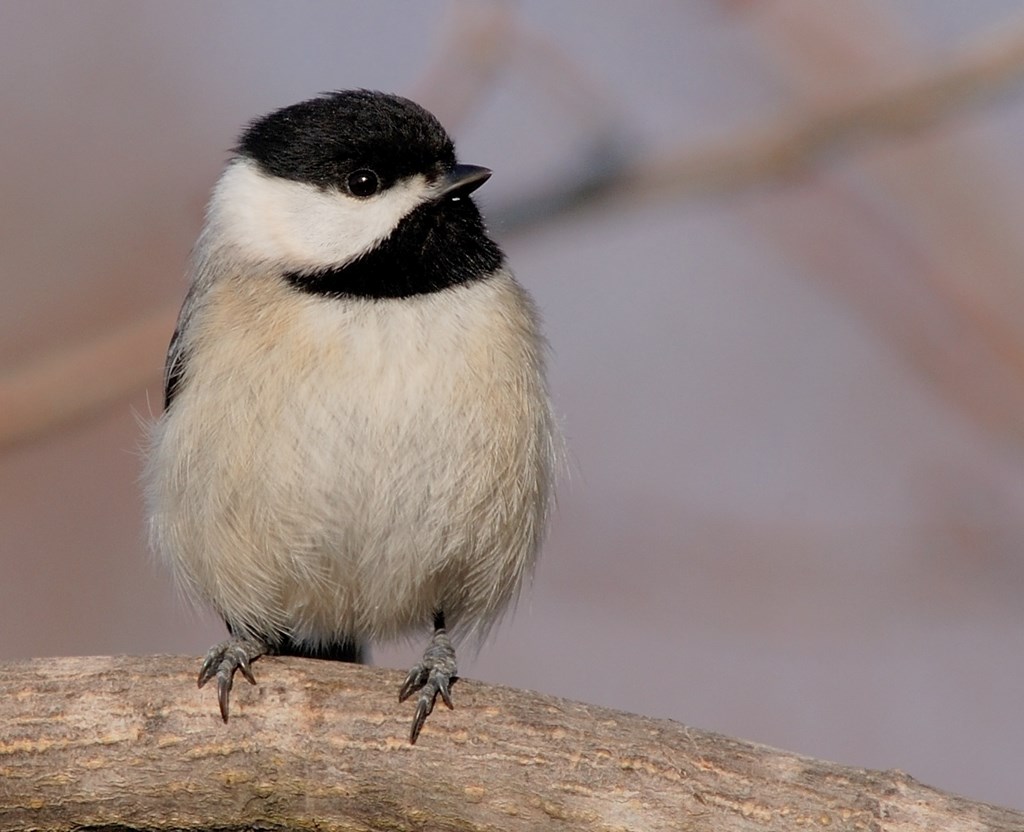Looking Back at Hawk Mountain 2020 Winter Bird Population Surveys
Posted on in On the Mountain by Bracken Brown, Biologist-Naturalist, and Rebekah Smith, Science-Education Outreach Coordinator

Hawk Mountain Sanctuary encompasses 2,500 acres of woodland along the Kittatinny Ridge in Southeastern Pennsylvania. Along with the annual fall and spring raptor migration counts, the Sanctuary has been surveying how birds use this landscape by performing long-term breeding and winter bird surveys.
These surveys are performed on two plots marked in a grid format within the forest. The River of Rocks plot is found in the valley below its namesake, the River of Rocks. It is dominated by larger oak and white pine with undergrowth in the form of spicebush, blueberry, huckleberry, and mountain laurel. The Owl’s Head plot is a located on the crest of the ridge where shorter trees allow for a denser undergrowth full of blueberry, mountain laurel, huckleberry, sheep laurel, serviceberry trees, wintergreen, and two small bogs. As these two mature plots change due to disturbances such as infectious disease outbreaks or invasive species exposure, they provide excellent insight into forest changes Sanctuary-wide and how forest use by the resident birds, both local and migratory, can consequently change over time. This type of analysis uses the wintering birds as bioindicators, giving us a glimpse into regional forest and bird population health. As we begin our annual breeding bird census, we also look back on our observations from our winter bird population surveys.
Winter bird surveys occur during the months of January and February every year and are initiated within 30 minutes of dawn, when birds are typically more vocal as they are coming off of their night time roosts and beginning to forage, making them easier to detect. Ideally, the weather is clear and calm to improve detections. The surveys are called off if high winds, rain, or other extreme weather that keeps the birds hunkered down is present. The surveys are usually completed within one and a half hours. Typically, the surveyor will walk for several grid intersections then pause and listen for calls or sounds of birds moving through the area foraging. When encountered, the birds are marked on the map of the plot and a series of markings are used to indicate the direction in which the bird was observed, identification method, and number of individuals in a group. A surveyor for this job must possess a keen sense of hearing, allowing them to identify songbird species through vocalization and to estimate the location of the vocalization.

At the end of the survey, a conservative estimate of the number of individuals of each species is written down. This may not match what is marked on the map if a flock detected crosses the surveyor’s path multiple times. For example, the same three chickadees with one tufted titmouse are seen at three locations across the grid, so the surveyor could have nine chickadees and three tufted titmouse marked, but only record that there were three chickadees and one tufted titmouse present during the survey. By recording data using a gridded plot, we can ensure bird location data standardization within the survey area. It also allows for accurate density calculations that can then be extrapolated for all similar habitat types throughout the Sanctuary.
In winter, the majority of birds forage in small, condensed flocks, which may be an explanation for some of the survey days when surveyors reported seeing only one or two individuals. Some of the most commonly recorded species are members of the woodpecker family Picidae. Downy, hairy, and pileated woodpeckers are the most reliably encountered due to their noisy foraging picks, paired with the heightened likelihood to be seen unaccompanied on a favored snag. Observed foraging flocks during the last winter season typically included chickadee, white-breasted nuthatch, golden-crowned kinglet, and tufted titmouse.
Although our fall migration count was below average this year, our winter bird survey results were calculated to be comfortably average. More recently, our observations for the spring migration count in 2020 have been above average. We look forward to seeing how Sanctuary bird numbers fare during our current breeding bird census that began at the end of April and runs through June.